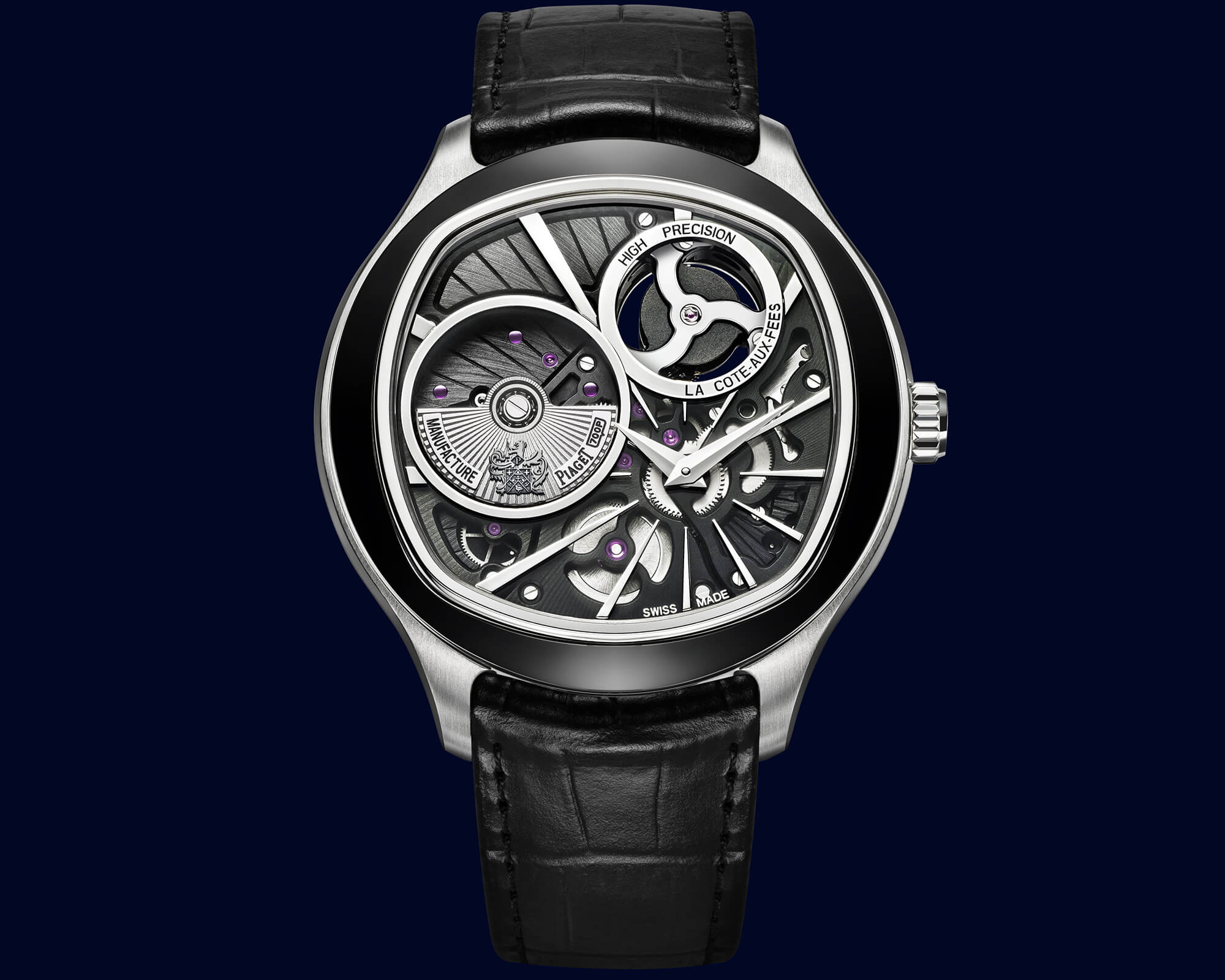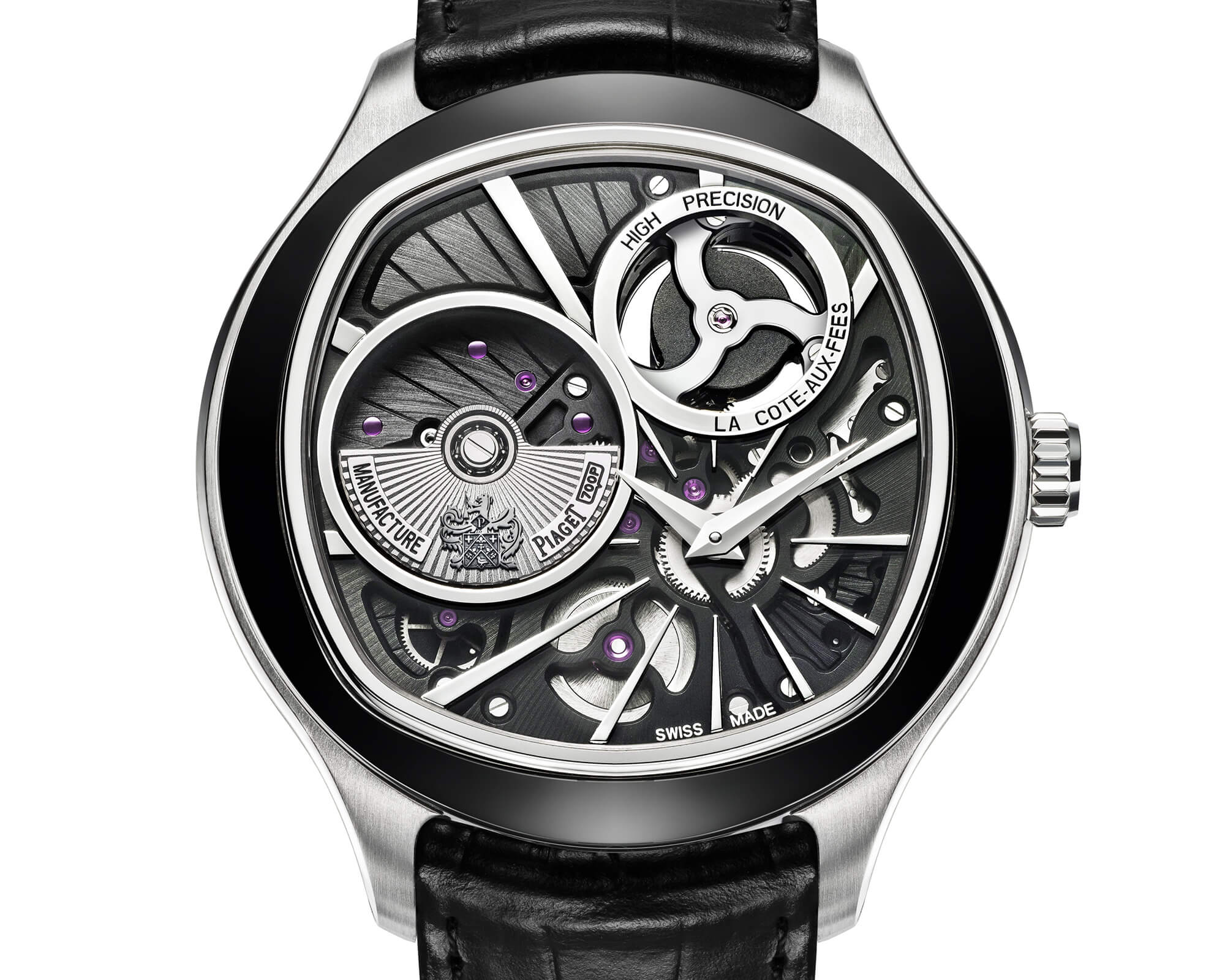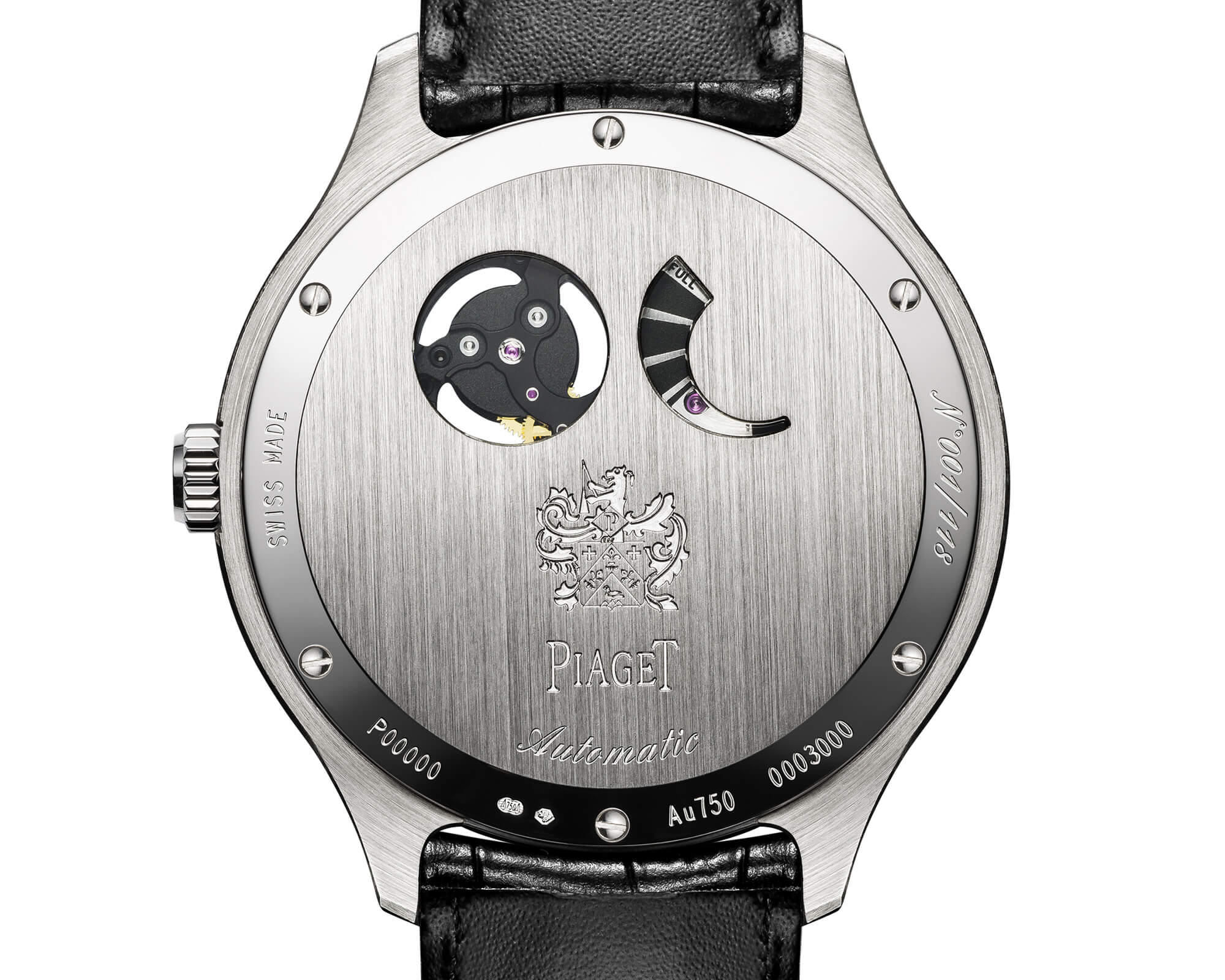Gone are the days when quartz rhymed with women’s watches or bottom-of-the-range. Recent years have witnessed some surprising developments in quartz calibres, as though Swiss watchmakers had finally put the so-called quartz crisis of the 1970s behind them, and were ready to make this technology a source of creativity. First came the Urwerk EMC in 2013, a mechanical watch with an electronic brain that monitored rate. Then came the F.P. Journe Elégante, whose quartz movement automatically switches to sleep mode when a sensor detects a lack of movement exceeding 30 minutes. A slew of interesting developments followed in 2015 that introduced complications to quartz calibres. These included moon phases (Certina), world time (Hamilton) and retrograde calendar functions (Mercury). Now the latest innovation to date is the Emperador Coussin XL 700P from Piaget, whose mechanical movement incorporates a quartz regulator.
Bye-bye sprung balance
Invented in 1967 at the Centre Electronique Horloger in Neuchâtel, Switzerland, and brought to market by Japanese brand Seiko in 1969, the quartz movement uses the mineral’s piezoelectric properties to divide time into fractions. When a wafer of quartz is placed under tension, its geometric crystal structure vibrates at a constant rate of 32,768 times a second. A battery-powered integrated circuit maintains these vibrations and sends electrical impulses that drive the seconds hand.
There is no battery in Piaget’s new watch. Its 700P movement is based on a traditional mechanical movement. The barrel, which is wound by an off-centred mini-rotor, drives a conventional gear train. The “trick” is how this continuous force is regulated: the movement’s designers have replaced the traditional sprung balance with a miniature generator which, as it rotates, produces an electric current that supplies energy to a quartz. Instead of driving the hands, this quartz is a timing package which ensures the generator rotates at precisely 5.33 turns/second – close to 4 Hz. The generator thus takes the place of the oscillator. The rotor is directly connected to the going train and rotates at the required frequency to give the time. Were it to accelerate, the quartz regulator alerts a processor and the movement is slowed.
This is a very reliable system. Furthermore, it has a chronometric performance of one second a day.
One second a day
“This is a very reliable system,” confirms Eric Klein, director of movement strategy at Piaget. “It is unaffected by magnetic fields and highly shock-resistant. Furthermore, it has a chronometric performance of one second a day.” Developed to mark the 40th anniversary of Piaget’s first quartz movement – the extra-thin 7P introduced in 1976 – this Emperador Coussin XL 700P is proposed as a limited edition of 188 pieces and took two years to research and develop, with ten patents pending.
The principle behind a hybrid movement such as this is nothing new. As Eric Klein explains, the 700P builds on an original concept that was registered by Jean-Claude Berney in 1972. An engineer with Ebauches SA, Berney had been researching a means of doing away with batteries which, as well as being much larger than they are today, had a limited lifespan. Berney’s invention was never brought to market. Seiko, meanwhile, was trying to work its way around the same problems, although it was 20 years before the Japanese firm was ready to commercialise its Kinetic watch. An oscillating weight set in motion by the wearer’s movements is coupled to a rotor. This rotor, which is suspended with magnetic levitation, spins 100,000 times a minute – that’s five times faster than a Formula One engine! The energy thus produced travels through an integrated circuit to charge a super-capacitor, which replaces the battery. Following successive improvements, Seiko implemented its new technology on an automatic movement. Launched in 2005, this Spring Drive system bears a striking similarity to Piaget’s 700P calibre.
















